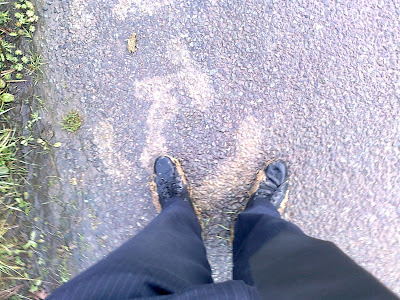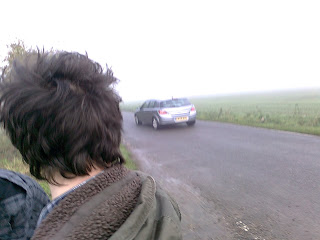Keeping that in mind, we all set out searching yet to no avail. It seemed that no matter where we looked it because almost unattainable to locate a room that would enhance all the ideas and notions we were trying to arise during our short thriller.
It was only when flittering through family pictures when I stumbled across photos of our recently refurbished living room. As one could formulate from the pictures below, the proverbial film fan could argue that such a setting would destroy the clinical notion set above. However, the group have reassessed this idea, and determined that perhaps the family setting could work just as effectively.
This could reinforce the suggestion that these are just normal people, with completely juxtaposed views upon how they live their lives. It would also anchor the violent, more climatic scenes towards the films conclusion, as it would ground the film and make the scenes unfolding before the audience seem more authentic.
Some of the problems we may encounter however derive back down to the fact that the room is a living room- not a psychiatrist office. However, like all good directors of their art, we can hopefully mould this around the plotline. For example, protagonist Christian is a volatile yet intellectually stimulated being, who has almost lost faith in the world and the people around him. So when he is forcefully subjected to see a phoney psychiatrist, trying to conform to a world gone wrong by preaching from the confines of his own phoney living room, this would infuriate the protagonist, ultimately leading to the psychiatrist’s demise.
Obviously, we could manipulate the space we have, to reflect the psychological/thriller genre. Such examples would include removing the rugs, sofa and family pictures. We could even pull the blinds and dim the lights to formulate an almost surreal, dreamlike sequence. One group member even suggested lighting the fire, which co-links with such films as “Shutter Island” in the warden office. As the room is quite drawn out as well, I can picture that reinforced long shots of the two over the table would anchor the scene quite fittingly.
Like with all initial ideas, I can understand that on the very day of shooting this room may not meet the required standards that our group are longing for. For example the lighting may be wrong, the required camera angles may be inaccessible, the mise-en-scene may conflict with opposing scenes etc. However, hopefully this suggestion will speed up the shooting process and enhance our marks in the long run, balancing on the factor of luck and how the footage looks on camera.
Hopefully if we do chose to pursue this room for this particular sequence, we can draw together a comparative blog-post of the room prior and post shooting dates, to inform the examiner of how we moulded a simple living room into a make-shift psychiatrist office.
This could reinforce the suggestion that these are just normal people, with completely juxtaposed views upon how they live their lives. It would also anchor the violent, more climatic scenes towards the films conclusion, as it would ground the film and make the scenes unfolding before the audience seem more authentic.
Some of the problems we may encounter however derive back down to the fact that the room is a living room- not a psychiatrist office. However, like all good directors of their art, we can hopefully mould this around the plotline. For example, protagonist Christian is a volatile yet intellectually stimulated being, who has almost lost faith in the world and the people around him. So when he is forcefully subjected to see a phoney psychiatrist, trying to conform to a world gone wrong by preaching from the confines of his own phoney living room, this would infuriate the protagonist, ultimately leading to the psychiatrist’s demise.
Obviously, we could manipulate the space we have, to reflect the psychological/thriller genre. Such examples would include removing the rugs, sofa and family pictures. We could even pull the blinds and dim the lights to formulate an almost surreal, dreamlike sequence. One group member even suggested lighting the fire, which co-links with such films as “Shutter Island” in the warden office. As the room is quite drawn out as well, I can picture that reinforced long shots of the two over the table would anchor the scene quite fittingly.
Like with all initial ideas, I can understand that on the very day of shooting this room may not meet the required standards that our group are longing for. For example the lighting may be wrong, the required camera angles may be inaccessible, the mise-en-scene may conflict with opposing scenes etc. However, hopefully this suggestion will speed up the shooting process and enhance our marks in the long run, balancing on the factor of luck and how the footage looks on camera.


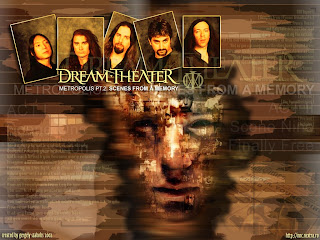
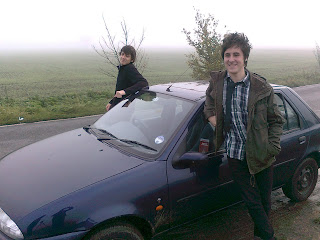 After the awful attempt to begin filming, we as agroup got our act together and decided that onFriday 19th November; we would spend the day filming for our short film. However, because we all had the same lesson first period, we all waiteduntil ten o’ clock to being shooting. So after confirming it was OK to go out shooting for the day, then signing out, we got into Dave Waters car and set off for our first day shooting.
After the awful attempt to begin filming, we as agroup got our act together and decided that onFriday 19th November; we would spend the day filming for our short film. However, because we all had the same lesson first period, we all waiteduntil ten o’ clock to being shooting. So after confirming it was OK to go out shooting for the day, then signing out, we got into Dave Waters car and set off for our first day shooting.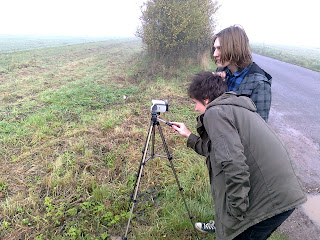 As we began driving to location, we decided what our primary and secondary objectives were to be for the day. Our primary objectives were to film shots of the country side for our opening title sequence. Our secondary objectives were to film parts of the film in which we could edit into the film. The main area of shooting would be in the Billericay country side roads (facing the fields) to represent the every slowly regressing psyche of the main character. The effectiveness of the shots use whilst we were in motion creates the effect of a journey within the mind of the main character.
As we began driving to location, we decided what our primary and secondary objectives were to be for the day. Our primary objectives were to film shots of the country side for our opening title sequence. Our secondary objectives were to film parts of the film in which we could edit into the film. The main area of shooting would be in the Billericay country side roads (facing the fields) to represent the every slowly regressing psyche of the main character. The effectiveness of the shots use whilst we were in motion creates the effect of a journey within the mind of the main character.